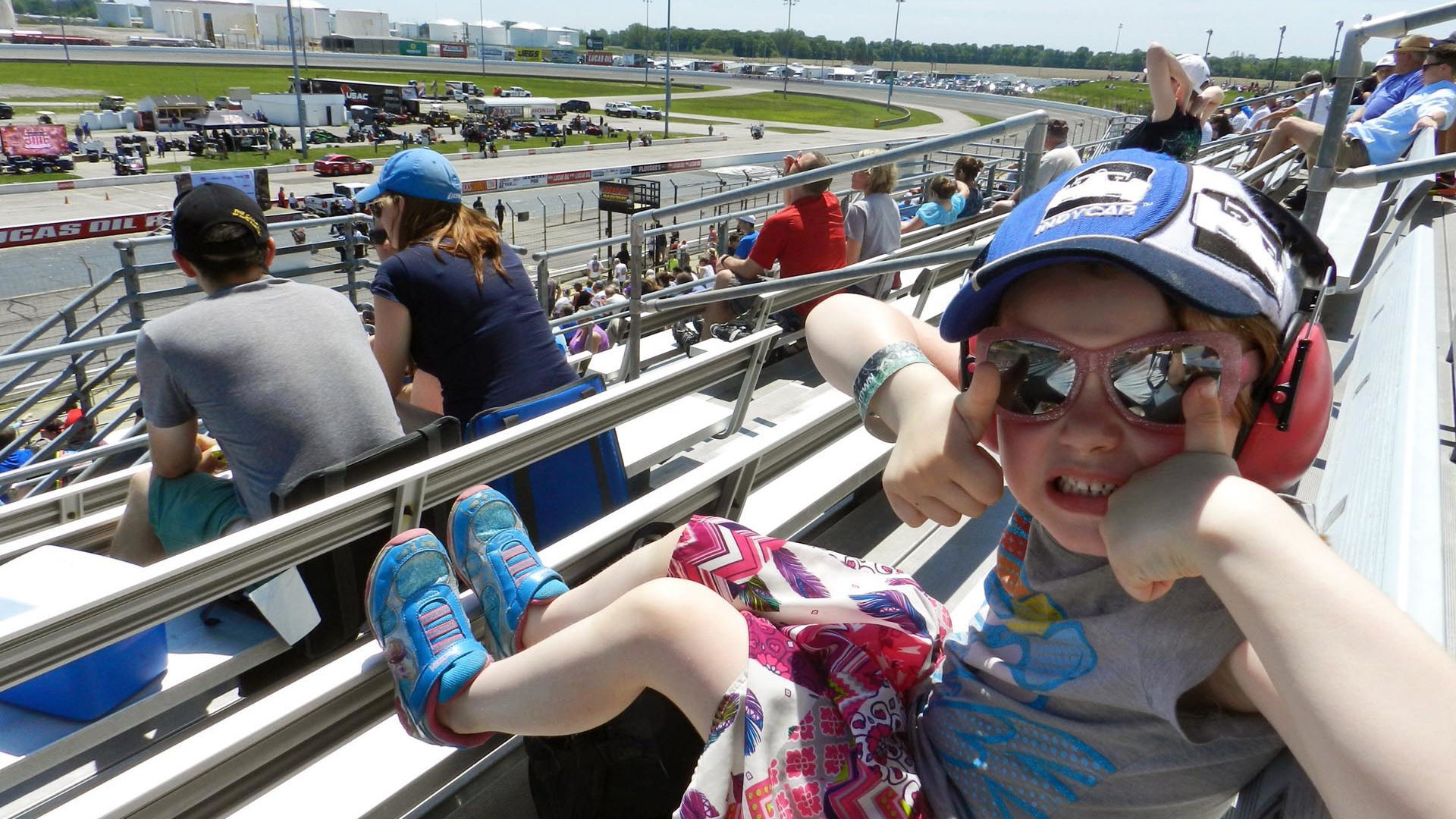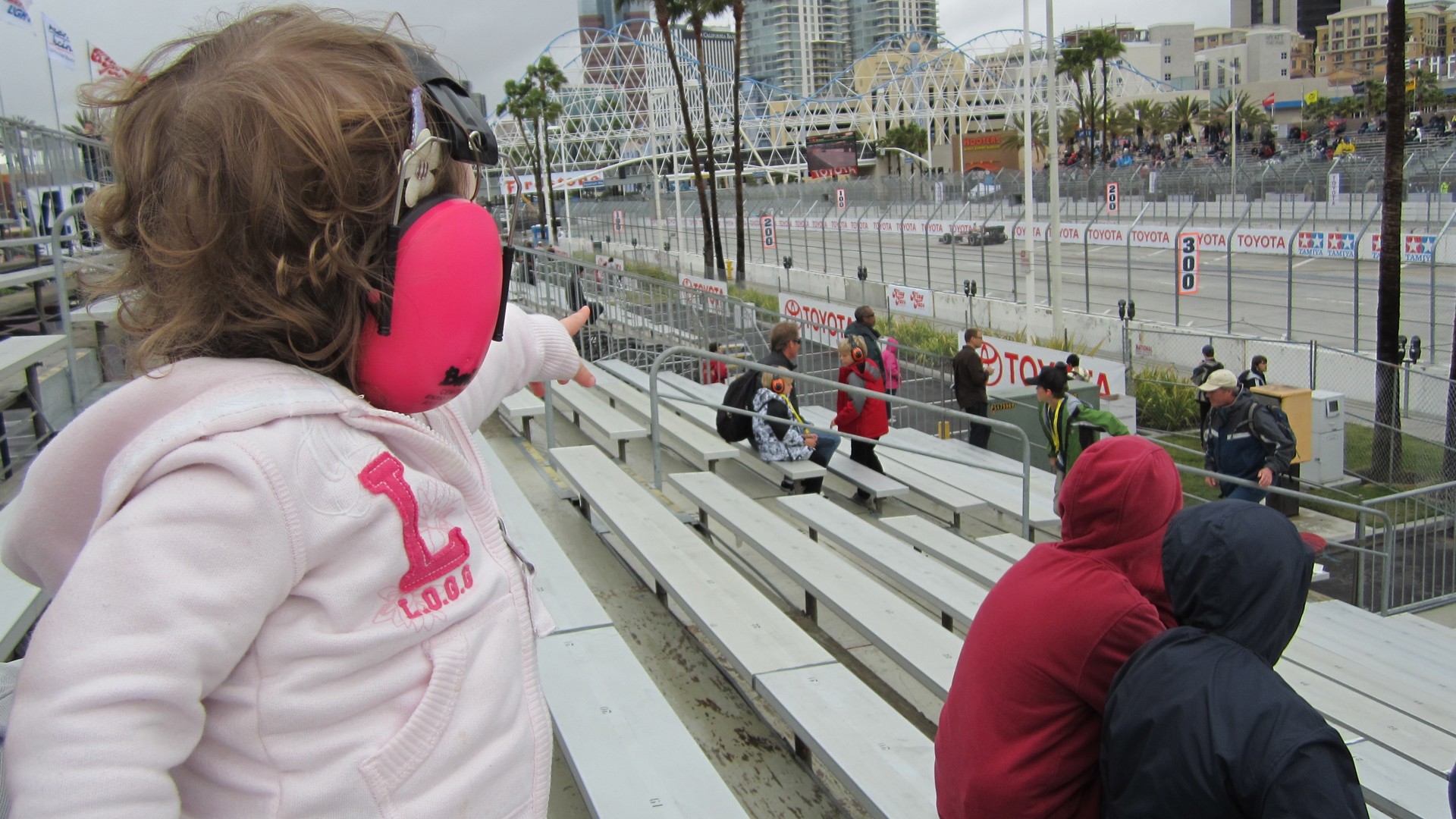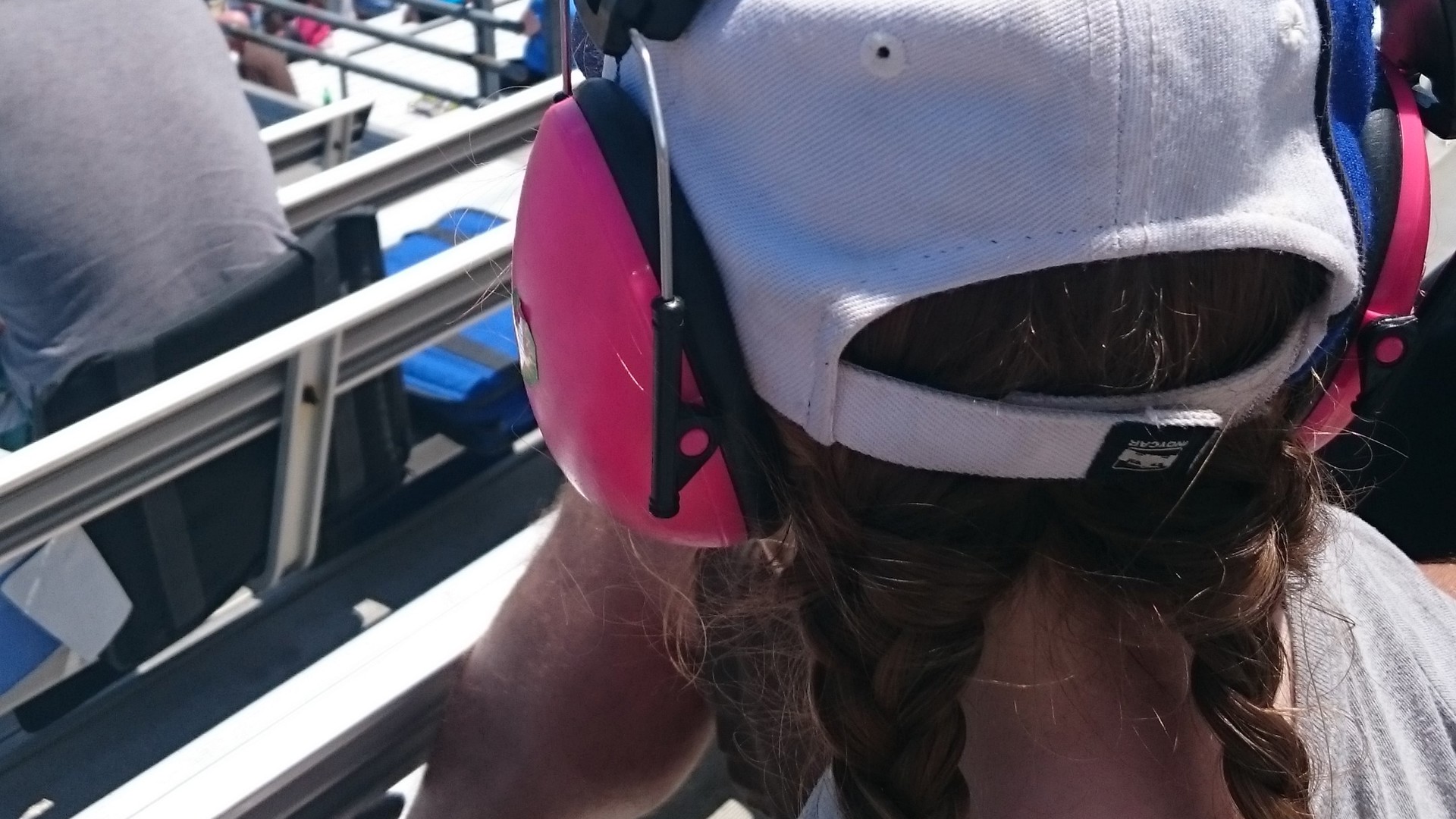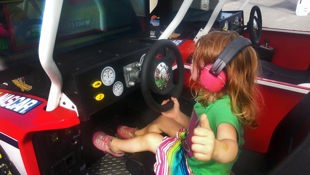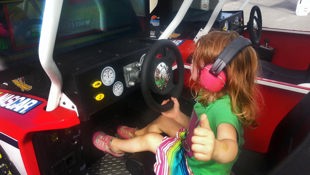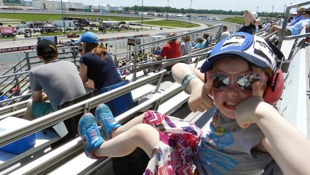Listen, folks. (See what I did there? If not, you will shortly.)
I’ve been hanging around racetracks for a very long time, initially as a young fan, and more recently as a working journalist for the past decade and change.
That longevity has afforded me plenty of opportunity to watch people make horrible mistakes at motorsport events.
Children, without exception, need hearing protection at motorsport events.
Choosing to drink copious amounts of beer instead of water on a sunny and sweltering hot day is a big one. Opting to go shirtless without sunscreen and a hat in similar conditions is another. And let’s not even go down the path that explores Georgetown Road on the night before the Indianapolis 500. There’s not enough bleach in the world to cleanse a brain of those visuals.
In the vast majority of these situations, though, the perpetrators aren’t hurting anyone but themselves and/or also-drunk bystanders. If you’re of the age of majority and you’ve got some idea of what you’re getting yourself into, then hey, knock yourself out.
But there’s one mistake I see time and time again that I consider to be among the most harmful, and yet I’m certain that none of the parties involved realize the potential gravity of the risks.
How do I know this? Because I’m a parent, and I would never knowingly put any aspect of my child’s future well-being on the line for any reason. And so, I’m forced by my own mamma-bear tendencies to assume that the rest of the parents I see at racetracks, as well-intentioned as they may be for giving their kids an early exposure to racing, haven’t got the first clue of just how much damage those engine sounds are doing to their kids’ ears.
Children, without exception, need hearing protection at motorsport events. This goes for anything with an engine, from motocross to sports cars to monster trucks. And as with most of parenting, kids can’t do a thing to protect themselves, so responsibility falls entirely on us grown-ups.
In fact, I made this mistake myself recently, and in expensive fashion. I took my daughter to Monster Jam this June, which moved this year from its typical Toronto venue at the Rogers Centre to the much more compact Scotiabank Arena. The seats are much closer to the action there, which means the noise from those 9-plus-litre V8s has much less distance to travel to reach spectator ears.
And wouldn’t you know it? As diligent as I usually am, I forgot her earmuffs.
As soon as those trucks came roaring out and I saw her clutch at her ears, you’d better believe I marched straight out to the concession stand and shelled out $25 for the branded earmuffs they keep on hand for ill-prepared parents like me. (That’s a very reasonable price for a properly rated set of earmuffs, by the way, so kudos to Monster Jam for not taking the forgetful-yet-responsible among us to the cleaners.)
In fact, just the brief time it took me to buy those earmuffs and bring them back could have been long enough to do some damage. Hearing impairment starts to take hold with regular exposure to 85 decibels, which is roughly equivalent to listening to a train go by from 15 metres away. (For reference, everyday speech registers at about 50 decibels.)
At 100 decibels, permanent hearing damage starts to occur after one minute of exposure. At 120 decibels, humans begin to experience physical pain. When exposed to 150 decibels, the eardrum will rupture.
The sound levels we're exposed to at a motorsport event depend entirely on the type of venue and the distance from the spectator to the vehicles, but the baseline starts very high on this scale. It’s not unusual to see a 100-decibel average even from far up in the stands, and people standing right next to a running engine can receive exposure as high as 140 decibels. At that level, it only takes 15 minutes to create permanent hearing loss. (I’m confident that what we were exposed to at Monster Jam was in the 120 to 130 decibel range, so I think I got those earmuffs back to my daughter just in time.)
What’s more is that many adults who already have some hearing damage – maybe from too many years of trying to look tough at racetracks, which I must sheepishly admit applies to me – might be more tolerant of these noise levels than people who haven’t yet had that damage done, particularly young children. This can lead parents not to realize how much more sensitive their kids’ ears may be to the same noise levels they’re having no trouble with.
Add on the fact that kids may not be able to fully express what they’re experiencing, either because they’re pre-verbal or they’re too young to find the words to describe it well, and grown-ups might misinterpret a child who’s screaming from ear pain as being just afraid or overwhelmed. Some might even think they’re doing the right thing by persisting with the exposure to get the child used to the environment, when all their doing is making the child’s risk of hearing loss worse.
And the problems can endure and go far deeper. According to studies collated by the World Health Organization, repeat exposure to excess noise can not only cause permanent hearing impairment in children but can also contribute to increases in stress hormones, sleep disturbances, and psycho-social effects such as impairment to attention, motivation, and long-term memory.
So, if you’re now convinced that hearing protection is the right call, how can you best protect your kids’ ears? The right answer depends on their ages. Earplugs aren’t recommended for children under three because they’re too easy to pluck out and turn into a choking hazard. Below that age, you’ll want to look for size-appropriate earmuffs that fit tightly around the ears and aren’t especially easy to your child to pull off his or her head. This likely means you’ll be paying at least once and possibly twice for size-appropriate muffs in the baby and toddler stages and then again for a new form of protection after age three, but it’s worth the cost for the peace of mind.
Once your kid is older than three, there are more options. I started my daughter with wearing earmuffs at six months – when she was born there were no hearing protection options on the market for younger babies, though there are products available today – so she’s comfortable enough with them now that she accepts them without tugging at them constantly. Other kids might not tolerate earmuffs as well, in which case there are child-sized earplugs on the market that are suited to smaller and narrower ear canals. If these make your kid uncomfortable, a moldable putty that sits outside the ear canal is another option. Earplugs and putties tend not to block out as much noise as earmuffs, though, making them a less-desirable option at a racetrack where every decibel counts.
Motorsport season is in full swing here in Canada, and between this weekend’s IMSA Mobil 1 SportsCar Grand Prix at Canadian Tire Motorsport Park, next weekend’s Honda Indy Toronto at Exhibition Place, the Canadian Superbike Championship finale and the NASCAR Gander Outdoors Truck Series Chevrolet Silverado 250 in August, and much, much more, there’s plenty of high-octane action to be enjoyed this summer by fans of all ages. Just bear in mind that once hearing damage is done, it’s done permanently. Protecting your kids will help ensure they can appreciate those engine notes along with you for many years to come.
